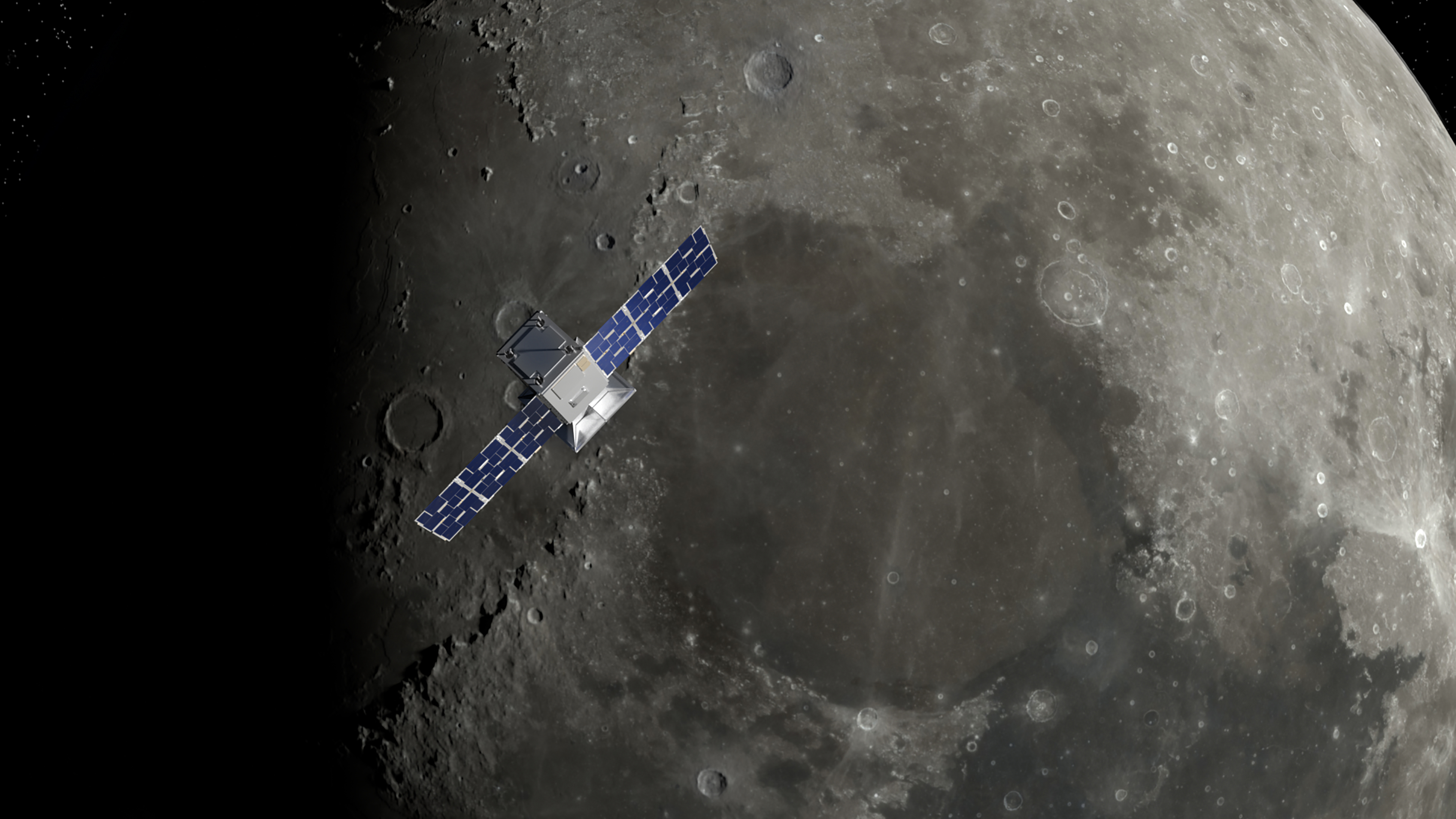
The Artemis Generation: To the moon — this time to stay! (op-ed)
We are in a new era of lunar exploration, development and settlement.

Bradley Cheetham is co-founder and CEO of Colorado-based company Advanced Space. He contributed this article to Space.com's Expert Voices: Op-Ed & Insights.
On June 28, 2022, CAPSTONE launched into space on a dedicated rocket as the first mission of the Artemis program, ushering in a new generation of lunar exploration, development and settlement. With NASA's leadership and global involvement, we are entering a period that will define the future of space exploration: the Artemis Generation.
As the architects of CAPSTONE, our team has learned first-hand the challenges of lunar missions. From communications and propulsion anomalies to suspected radiation upsets, traveling to the moon and operating there is not an easy task. During these challenges, however, the best of the industry united and we overcame — such alignment is the key to successful long-term lunar development.
Related: NASA's Artemis program: Everything you need to know
Navigating the next era of exploration
The sustainability of future mission operations at the moon will be determined in the coming years. CAPSTONE was quickly followed to the moon by Artemis 1, the Korean Pathfinder Lunar Orbiter (KPLO), and iSpace's lunar lander. In the coming months and years, missions supporting NASA's CLPS (Commercial Lunar Payload Services) program will be launched along with other international missions and the Oracle mission for the Air Force Research Lab. All of these missions, and many more, point to a time-sensitive need for continued development of infrastructure that can scale to meet the evolving needs of a diverse set of missions at the moon.
To paraphrase Aristotle, we are better when we work together. CAPSTONE — the result of work from Advanced Space, NASA, Rocket Lab, Terran Orbital, Stellar Exploration and more — was a collaborative effort. When CAPSTONE encountered an anomaly and was spinning rapidly, hundreds of thousands of kilometers from Earth, it was the phenomenal support of the team and resources at the NASA Deep Space Network (DSN) that allowed us to bring it back on course. It is no exaggeration to say that without this support the mission would not have made it to the moon.
This is emblematic of how our industry comes together to overcome adversity. As the largest and most sensitive scientific telecommunications system in the world, the DSN is a national asset and it needs the support of additional infrastructure to meet the rapidly increasing demand of mission planners headed to the moon.
Get the Space.com Newsletter
Breaking space news, the latest updates on rocket launches, skywatching events and more!
As government and commercial missions continue to mature and increase in number and scope, the infrastructure required to support operations at the moon must include the entire value chain. We need rockets, spacecraft, landers, ground tracking sites and people with the knowledge, experience and confidence to execute these challenging missions. The need for launch vehicles and spacecraft/landers is a persistent — and practical — topic, but success is entirely dependent on the systems and people necessary to communicate, navigate, plan and operate these missions.
Scalable communication from the moon
Communication is a fundamental requirement for successful space exploration. As the CAPSTONE spacecraft traveled over 1,531,949 kilometers (951,900 miles) from Earth on its way to the moon, using a highly efficient ballistic lunar transfer, the microwave oven-sized satellite communicated with operators through a 34-meter-wide (112 feet) tracking dish. For context, 34 meters exceeds the size of a baseball diamond, and these dishes must track their targets in deep space using large motors all while maintaining signal quality.
These Deep Space Network stations are used to support missions throughout the solar system. Their performance is not just about the size of the dish, but is also enabled by high-precision electronics and a team of support personnel who are completely dedicated to their roles. As we move forward, lunar growth and development will be dependent on providing additional capacity to support communicating with and navigating spacecraft on their way to, and operating at, the moon.
We are at a critical inflection point where safe and transparent operations in cislunar space necessitate improvements in navigation, awareness, data and communications. This will require broad, global involvement. New systems to augment the DSN will not have the same performance requirements but will absolutely assist missions to return data and support operations at the moon. These systems won’t supplant the need for the DSN, but if they are designed and deployed in ways that preserve scalability and the ability to infuse new technologies, they will represent the critical surge capacity that future demand will require. Innovations in space-based infrastructure, such as communication relay satellites, and space-based navigation technologies will help scale current capabilities to meet future demand.
These space-based systems will face many challenges, some of which CAPSTONE is already focused on overcoming using the insights we have gained through operating at the moon for over 150 days to date. Space communications relay has already enabled incredible science in Earth orbit and at Mars; deploying this capability at the moon is essential to alleviate the emerging bottleneck and open this critical region of space for scientific exploration and commercial development. We believe future missions will utilize increasingly automated and scalable solutions to meet their navigation and communication needs. Navigating spacecraft at the moon, without the benefit of ubiquitous GPS signals, is a complex challenge. Performing this navigation using ground-based measurements and ground operations tools has now been demonstrated repeatedly by both government and commercial entities. The next challenge will be to deploy navigation technologies so that lunar spacecraft can perform some of this function onboard and ideally with reduced ground tracking segment involvement.
As more missions proceed to the moon, the finite resources of global ground networks need to be prioritized, where possible, to bring back mission data. Routine operations need a more scalable solution. To this point, CAPSTONE is working to demonstrate multiple new navigation approaches that we believe will be a part of enabling rapid growth in lunar missions in the coming years. We are learning a lot from these ongoing flight experiments — as we all know, there are just some things you can't know until you go!
The Artemis Generation takes flight
While it’s easy to focus on hardware, we must recognize that the learning, experience, intuition and capacity to execute these missions resides in people. These people are part of teams that earn the experience and deserve the recognition. These people are the hope of the future.
The Artemis Generation is defined by a time period and a group of people who will collectively strive to leave a legacy for future generations in much the same way the Apollo Generation blazed a trail to the moon 60 years ago. Together, these government and industry teams will overcome challenges, reach exciting milestones and return humanity to the moon, this time to stay.
Follow us on Twitter @Spacedotcom or Facebook.
Join our Space Forums to keep talking space on the latest missions, night sky and more! And if you have a news tip, correction or comment, let us know at: community@space.com.

Bradley Cheetham is a lifelong space advocate, highly experienced and educated engineer, and a seasoned graduate-level instructor. Best known as the co-founder and CEO of Advanced Space, he leads the company in its efforts to enable the sustainable exploration, development, and settlement of space by delivering solutions in flight dynamics, technology development and rapid turn-key missions to clients across the space industry. Advanced Space is the owner and operator of the CAPSTONE spacecraft, which successfully arrived at the moon in 2022 as a pathfinder for NASA's Artemis program. Bradley serves as the principal investigator for this mission, which represents the first-ever commercial spacecraft to operate at the moon.









